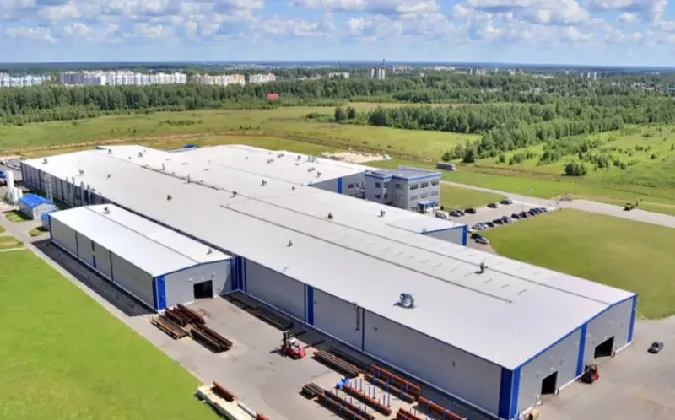- Afrikaans
- Albanian
- Amharic
- Arabic
- Armenian
- Azerbaijani
- Basque
- Belarusian
- Bengali
- Bosnian
- Bulgarian
- Catalan
- Cebuano
- Corsican
- Croatian
- Czech
- Danish
- Dutch
- English
- Esperanto
- Estonian
- Finnish
- French
- Frisian
- Galician
- Georgian
- German
- Greek
- Gujarati
- Haitian Creole
- hausa
- hawaiian
- Hebrew
- Hindi
- Miao
- Hungarian
- Icelandic
- igbo
- Indonesian
- irish
- Italian
- Japanese
- Javanese
- Kannada
- kazakh
- Khmer
- Rwandese
- Korean
- Kurdish
- Kyrgyz
- Lao
- Latin
- Latvian
- Lithuanian
- Luxembourgish
- Macedonian
- Malgashi
- Malay
- Malayalam
- Maltese
- Maori
- Marathi
- Mongolian
- Myanmar
- Nepali
- Norwegian
- Norwegian
- Occitan
- Pashto
- Persian
- Polish
- Portuguese
- Punjabi
- Romanian
- Russian
- Samoan
- Scottish Gaelic
- Serbian
- Sesotho
- Shona
- Sindhi
- Sinhala
- Slovak
- Slovenian
- Somali
- Spanish
- Sundanese
- Swahili
- Swedish
- Tagalog
- Tajik
- Tamil
- Tatar
- Telugu
- Thai
- Turkish
- Turkmen
- Ukrainian
- Urdu
- Uighur
- Uzbek
- Vietnamese
- Welsh
- Bantu
- Yiddish
- Yoruba
- Zulu
des. . 31, 2024 10:42 Back to list
The Skeleton Steel Framing System A Modern Marvel in Construction
In the realm of modern architecture and engineering, the skeleton steel framing system stands out as a pivotal advancement that has defined the skyline of urban centers around the globe. This innovative construction method utilizes a framework of steel columns, beams, and braces to support and stabilize a building, offering numerous advantages over traditional building techniques. Its inception marked a significant turning point in how structures were conceived and constructed, enabling the development of taller, more resilient buildings.
The Concept of Skeleton Steel Framing
At its core, the skeleton steel framing system consists of a skeletal structure that bears the load of the building itself. Vertical steel columns rise skyward, joined by horizontal beams that create a robust framework to support floors and roofs. This design allows for the distribution of weight across the frame, significantly enhancing the building's strength and stability. One of the most notable features of this system is its ability to withstand lateral forces, such as winds and earthquakes, making it an ideal choice for skyscrapers and other high-rise constructions.
The use of steel provides several advantages. Steel is not only remarkably strong but also lightweight compared to other building materials like concrete or masonry. This reduction in mass can lead to lower foundation costs, as the weight of the structure is minimized. Furthermore, steel framing offers excellent flexibility, enabling architects to create expansive open spaces without the need for numerous support walls or columns. This has revolutionized interior design, allowing for more functional and aesthetically pleasing layouts.
Historical Context
The skeleton steel framing system began to take shape in the late 19th century during the Industrial Revolution. As cities rapidly expanded and the demand for high-rise buildings grew, engineers and architects began experimenting with steel as a primary construction material. Iconic structures such as the Home Insurance Building in Chicago, completed in 1885, are often credited as the first modern skyscrapers, utilizing steel frames to rise higher than any building before them.
skeleton steel framing system

As the 20th century progressed, the popularity of steel framing continued to soar. Landmark buildings such as the Empire State Building and the Chrysler Building showcased the potential of this construction method, combining artistic vision with engineering prowess. The ability of steel frames to support unique architectural designs led to an explosion of creativity in skyscraper construction, resulting in some of the most recognizable landmarks in the world.
Contemporary Uses and Innovations
Today, the skeleton steel framing system is a standard in modern construction, found in commercial buildings, residential complexes, and bridge structures. It is particularly favored for high-rise buildings and skyscrapers due to its efficiency and strength-to-weight ratio. Moreover, advancements in steel manufacturing and construction techniques have led to even greater enhancements in performance and sustainability.
Innovations such as modular steel framing and pre-fabricated components have further streamlined the construction process. These technologies not only reduce construction time but also minimize waste, promoting environmentally friendly practices in the industry. Additionally, the use of high-strength steel alloys, combined with cutting-edge engineering software, has allowed for even taller and more complex structures to be built, pushing the boundaries of what is possible.
Sustainability and Future Directions
As the construction industry places a more significant emphasis on sustainability, the skeleton steel framing system is well-positioned for future developments. Steel is 100% recyclable, and many contemporary projects incorporate recycled steel, significantly reducing the environmental impact. Furthermore, the energy efficiency of buildings constructed using this method can be enhanced through smart design practices, including improved insulation and energy-efficient windows, making steel-framed buildings a sustainable choice for the future.
In summary, the skeleton steel framing system represents a convergence of engineering excellence and architectural innovation. Its ability to combine strength, flexibility, and aesthetic appeal has transformed urban skylines and provided solutions for the challenges posed by urbanization. As we look to the future, the ongoing evolution of steel framing technology promises to deliver even greater advancements in construction, ensuring that this method remains at the forefront of modern architectural design and engineering.
-
Cold Formed Steel Residential Framing
NewsMay.21,2025
-
Innovative Steel Structure Building Solutions
NewsMay.19,2025
-
Innovative Prefab Metal Shed Solutions
NewsMay.19,2025
-
Durable Steel Horse Shelter Solutions
NewsMay.19,2025
-
Durable Metal Shed Solutions
NewsMay.19,2025
-
Durable Big Metal Shed Solutions
NewsMay.19,2025
Products categories
Our Latest News
We have a professional design team and an excellent production and construction team.












